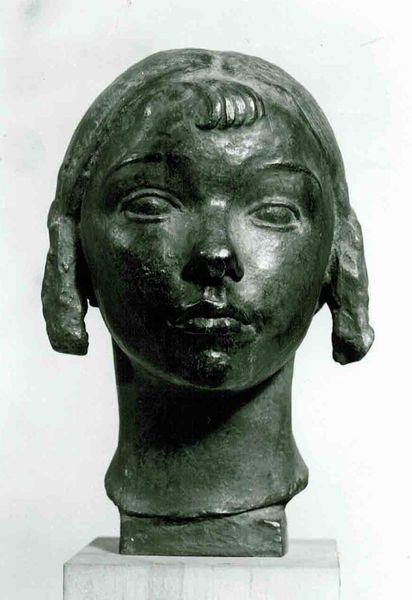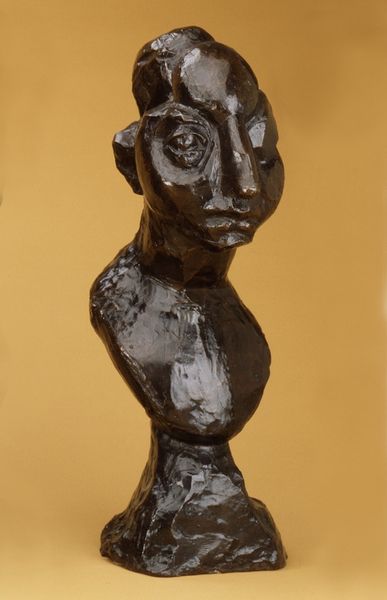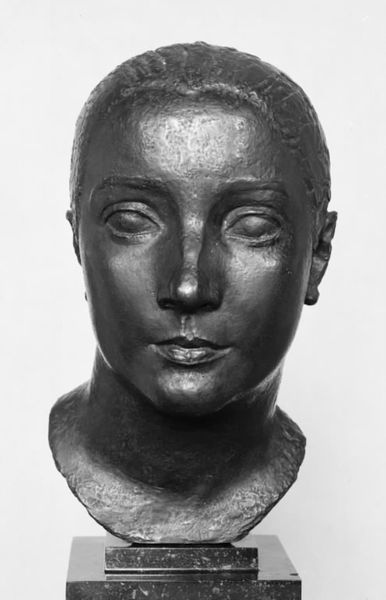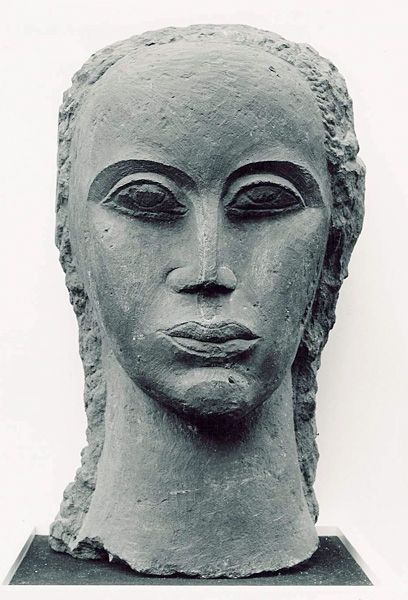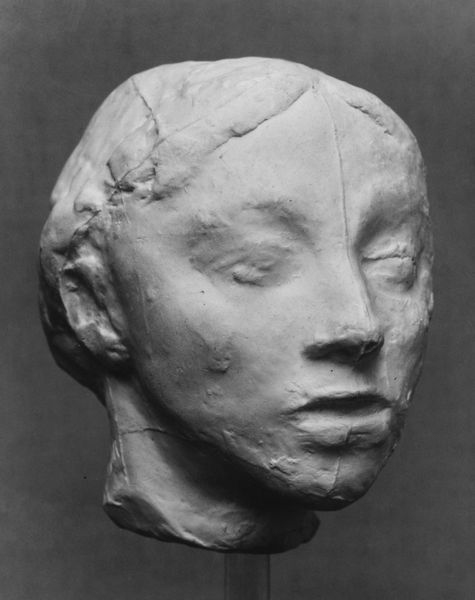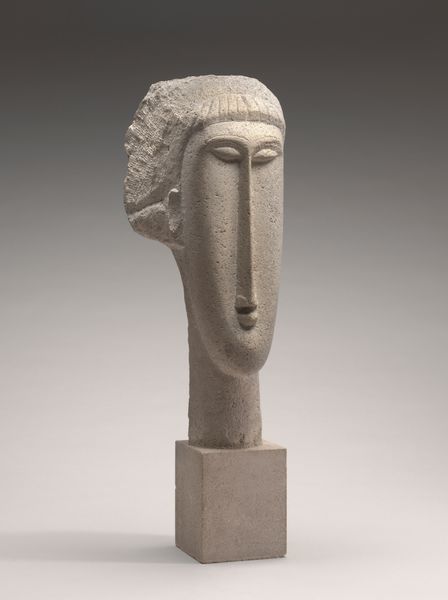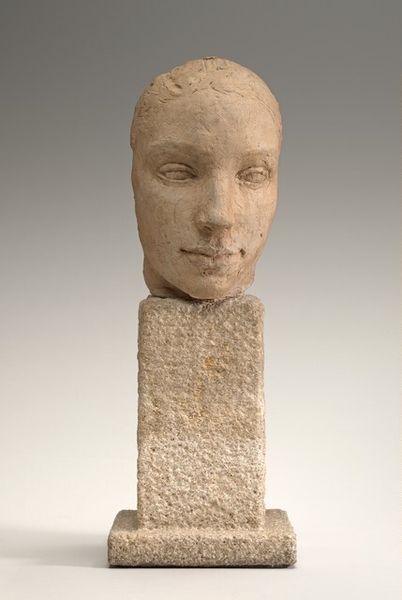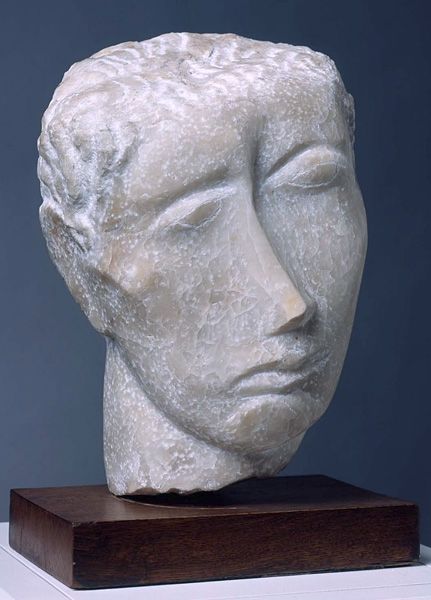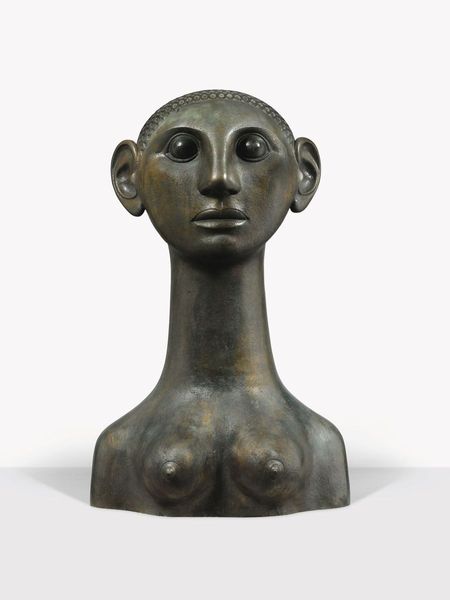
Dimensions: object: 360 x 230 x 230 mm
Copyright: © Estate of Dora Gordine, courtesy Dorich House Museum, Kingston University | CC-BY-NC-ND 4.0 DEED, Photo: Tate
Curator: Here we have Dora Gordine's striking bronze sculpture, "Guadaloupe Head/Negress," currently residing in the Tate Collections. Editor: There's a profound stillness to it; the darkness of the bronze emphasizes the contemplative expression. It’s almost meditative. Curator: Indeed. Gordine, who lived from 1895 to 1991, often explored the interplay of light and shadow across textured surfaces, creating depth and emotional resonance. We can see this particularly in the modeling of her face. Editor: That texture is key. It prevents the sculpture from becoming just a representation; it engages the viewer viscerally. I'm curious, what role do you think the museum plays in contextualizing a work like this? Curator: It invites reflection on the historical and social contexts in which it was produced and viewed. The museum becomes a space for engaging with difficult issues surrounding representation and identity. Editor: The title itself demands a critical perspective, reminding us of the complexities inherent in naming and categorizing art. Curator: Absolutely. It is through these dialogues that we can appreciate the artwork's enduring power to provoke thought and conversation. Editor: A compelling work that continues to challenge and inspire.
Comments
tate 8 months ago
⋮
http://www.tate.org.uk/art/artworks/gordine-guadaloupe-headnegress-t03746
Join the conversation
Join millions of artists and users on Artera today and experience the ultimate creative platform.
tate 8 months ago
⋮
Gordine, an Estonian sculptor, made this work while studying in Paris. She modelled it from a woman she met by chance in the city. However, the artist did not depict her sitter as an individual. Instead, Gordine represented what she saw as the visual characteristics of a ‘race’. The Caribbean island of Guadaloupe was then a French colony, and later became part of France. This work is rooted in the colonial attitudes prevalent in Europe at the time.The term ‘negress’, the female form of ‘negro’, was commonly used in the 1920s. It is now acknowledged as highly offensive. The term derives from the Latin for black. From the 18th century onwards it became associated with the now debunked pseudoscience of ‘race biology’. This discriminatory classification of people based on their skin colour has been used to justify racism. Gallery label, June 2021



